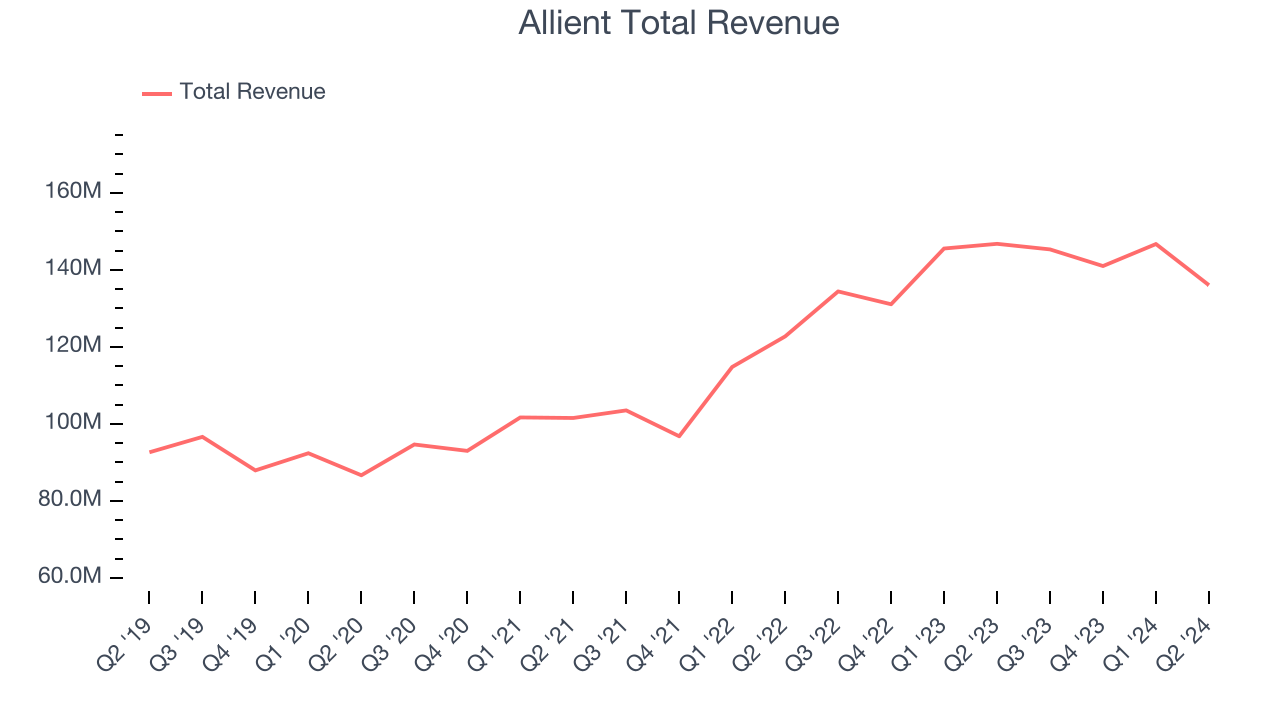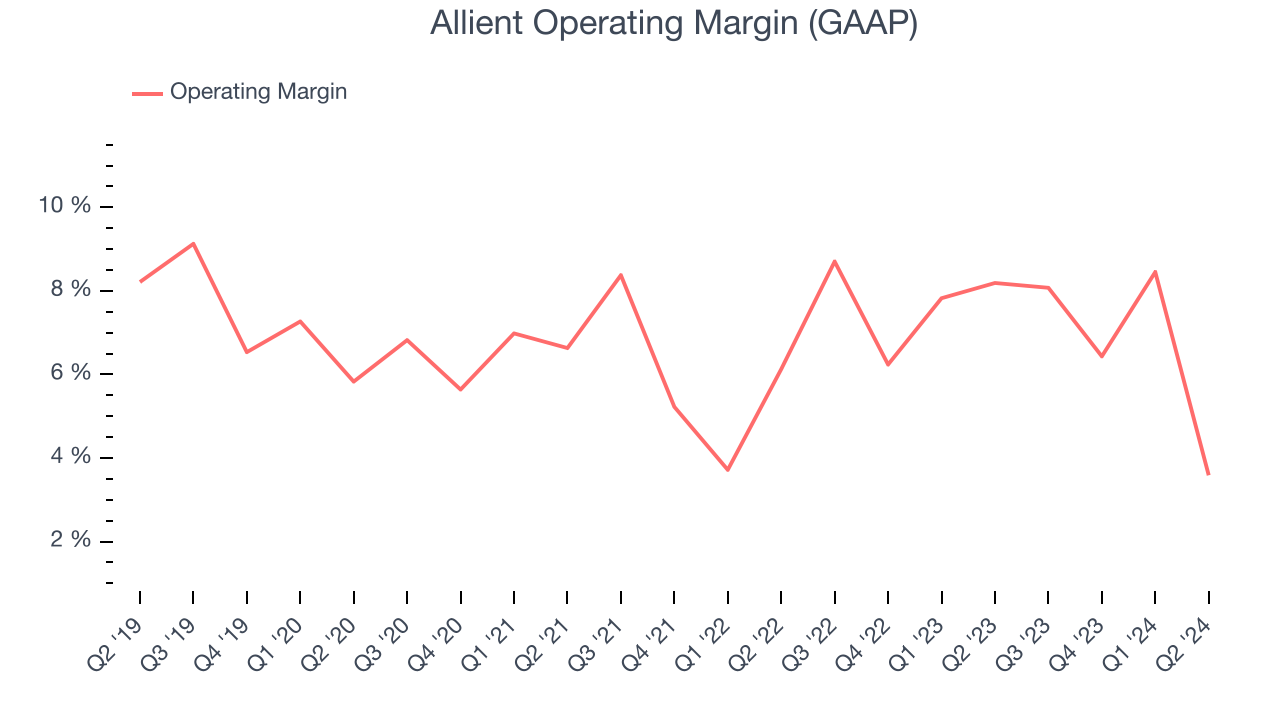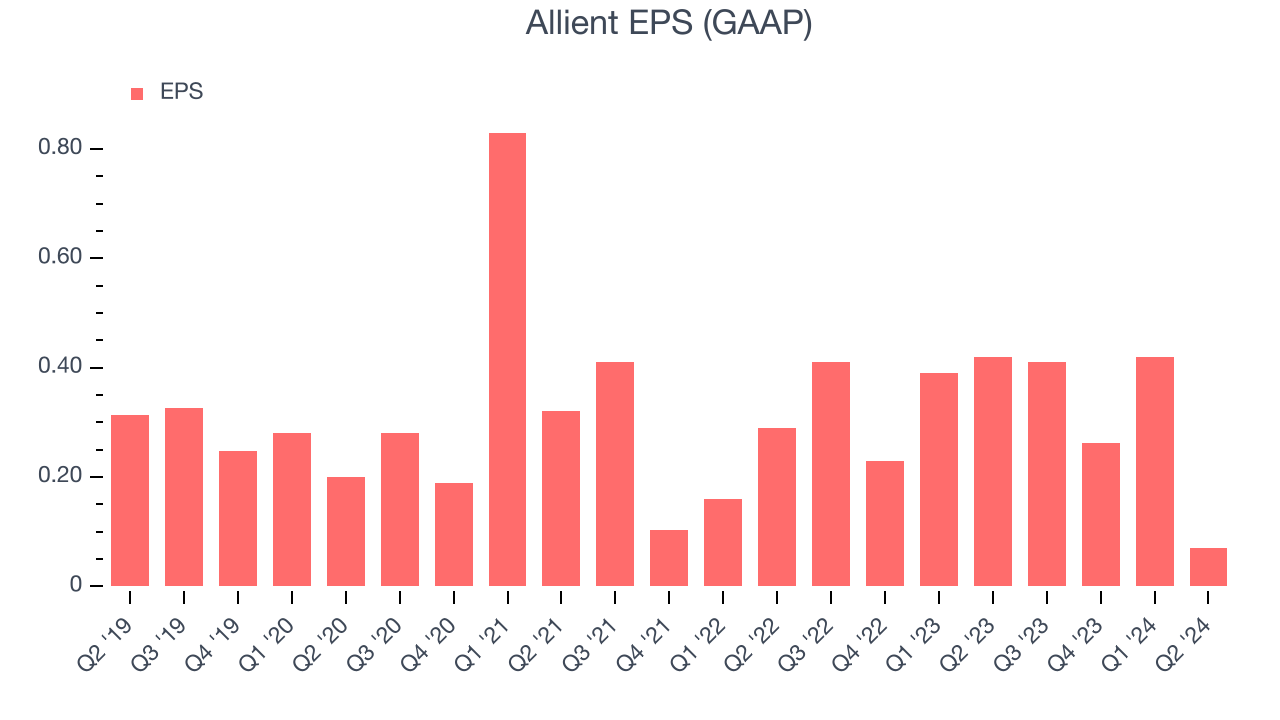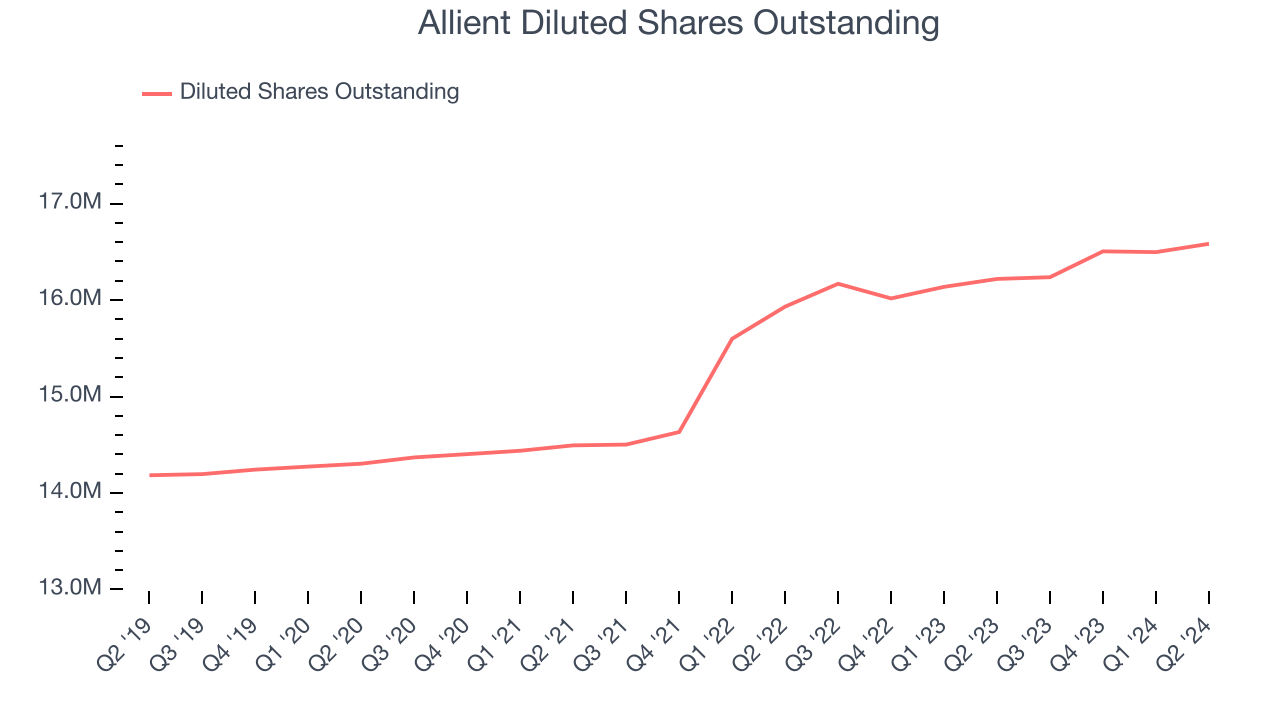Precision motion systems specialist Allient (NASDAQ:ALNT) fell short of analysts' expectations in Q2 CY2024, with revenue down 7.3% year on year to $136 million. It made a GAAP profit of $0.07 per share, down from its profit of $0.42 per share in the same quarter last year.
Is now the time to buy Allient? Find out by accessing our full research report, it's free.
Allient (ALNT) Q2 CY2024 Highlights:
"Lower than anticipated revenue combined with inventory reserves related to a customer bankruptcy and current gross margin dilution as expected from our most recent acquisition had a measurable impact on earnings in the second quarter."
- Revenue: $136 million vs analyst estimates of $139.6 million (2.6% miss)
- EPS: $0.07 vs analyst estimates of $0.22 (-$0.15 miss)
- Gross Margin (GAAP): 29.9%, down from 31.3% in the same quarter last year
- EBITDA Margin: 10.2%
- Free Cash Flow of $5.84 million, similar to the previous quarter
- Market Capitalization: $410 million
Dick Warzala, Chairman and CEO, commented, “Despite strong efforts from our team, we saw a significant demand shift during the month of June, with a notable decline in the Industrial market related to automation and the recreational industry combined with lesser declines in other served markets. Lower than anticipated revenue combined with inventory reserves related to a customer bankruptcy and current gross margin dilution as expected from our most recent acquisition had a measurable impact on earnings in the second quarter.
Founded in 1962, Allient (NASDAQ:ALNT) develops and manufactures precision and specialty-controlled motion components and systems.
Electronic Components
Like many equipment and component manufacturers, electronic components companies are buoyed by secular trends such as connectivity and industrial automation. More specific pockets of strong demand include data centers and telecommunications, which can benefit companies whose optical and transceiver offerings fit those markets. But like the broader industrials sector, these companies are also at the whim of economic cycles. Consumer spending, for example, can greatly impact these companies’ volumes.
Sales Growth
Examining a company's long-term performance can provide clues about its business quality. Any business can put up a good quarter or two, but the best consistently grow over the long haul. Thankfully, Allient's 10.2% annualized revenue growth over the last five years was solid. This shows it was successful in expanding, a useful starting point for our analysis. 
Long-term growth is the most important, but within industrials, a half-decade historical view may miss new industry trends or demand cycles. Allient's annualized revenue growth of 14% over the last two years is above its five-year trend, suggesting its demand was strong and recently accelerated.
This quarter, Allient missed Wall Street's estimates and reported a rather uninspiring 7.3% year-on-year revenue decline, generating $136 million of revenue. Looking ahead, Wall Street expects sales to grow 1.4% over the next 12 months, an acceleration from this quarter.
Here at StockStory, we certainly understand the potential of thematic investing. Diverse winners from Microsoft (MSFT) to Alphabet (GOOG), Coca-Cola (KO) to Monster Beverage (MNST) could all have been identified as promising growth stories with a megatrend driving the growth. So, in that spirit, we’ve identified a relatively under-the-radar profitable growth stock benefitting from the rise of AI, available to you FREE via this link.
Operating Margin
Allient was profitable over the last five years but held back by its large expense base. It demonstrated mediocre profitability for an industrials business, producing an average operating margin of 6.8%.
Looking at the trend in its profitability, Allient's annual operating margin might have seen some fluctuations but has remained more or less the same over the last five years, which doesn't help its cause.

This quarter, Allient generated an operating profit margin of 3.6%, down 4.6 percentage points year on year. Since Allient's operating margin decreased more than its gross margin, we can assume the company was recently less efficient because expenses such as sales, marketing, R&D, and administrative overhead increased.
EPS
We track the long-term growth in earnings per share (EPS) for the same reason as long-term revenue growth. Compared to revenue, however, EPS highlights whether a company's growth was profitable.
Sadly for Allient, its EPS declined by 1.8% annually over the last five years while its revenue grew by 10.2%. However, its operating margin didn't change during this timeframe, telling us non-fundamental factors affected its ultimate earnings.

We can take a deeper look into Allient's earnings to better understand the drivers of its performance. A five-year view shows Allient has diluted its shareholders, growing its share count by 16.9%. This has led to lower per share earnings. Taxes and interest expenses can also affect EPS but don't tell us as much about a company's fundamentals. 
Like with revenue, we also analyze EPS over a more recent period because it can give insight into an emerging theme or development for the business. For Allient, its two-year annual EPS growth of 9.8% was higher than its five-year trend. Accelerating earnings growth is almost always an encouraging data point.
In Q2, Allient reported EPS at $0.07, down from $0.42 in the same quarter last year. This print missed analysts' estimates. We also like to analyze expected EPS growth based on Wall Street analysts' consensus projections, but there is insufficient data.
Key Takeaways from Allient's Q2 Results
We struggled to find many strong positives in these results. Its revenue unfortunately missed and its EPS fell short of Wall Street's estimates. This quarter featured some positives but overall could have been better. The stock traded down 7.6% to $22 immediately following the results.
Allient may have had a tough quarter, but does that actually create an opportunity to invest right now? When making that decision, it's important to consider its valuation, business qualities, as well as what has happened in the latest quarter. We cover that in our actionable full research report which you can read here, it's free.
